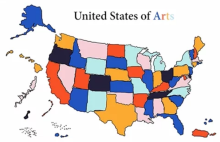Search
Use the filters below to refine your search.
You can also search specifically for blog posts, podcasts, magazine articles, and videos in the Stories section, as well as specific search pages for:
Initiative
- Arts & Human Development Task Force
- Arts Education Partnership
- Blue Star Museums
- Citizens' Institute on Rural Design
- Creative Forces: NEA Military Healing Arts Network
- International
- Jazz Masters Live
- Literature Fellowships
- Mayors' Institute on City Design
- NEA Big Read
- NEA Research Labs
- Operation Homecoming
- Our Town
- Poetry Out Loud
- Shakespeare in American Communities
- Songwriting Challenge
- Sound Health Network



